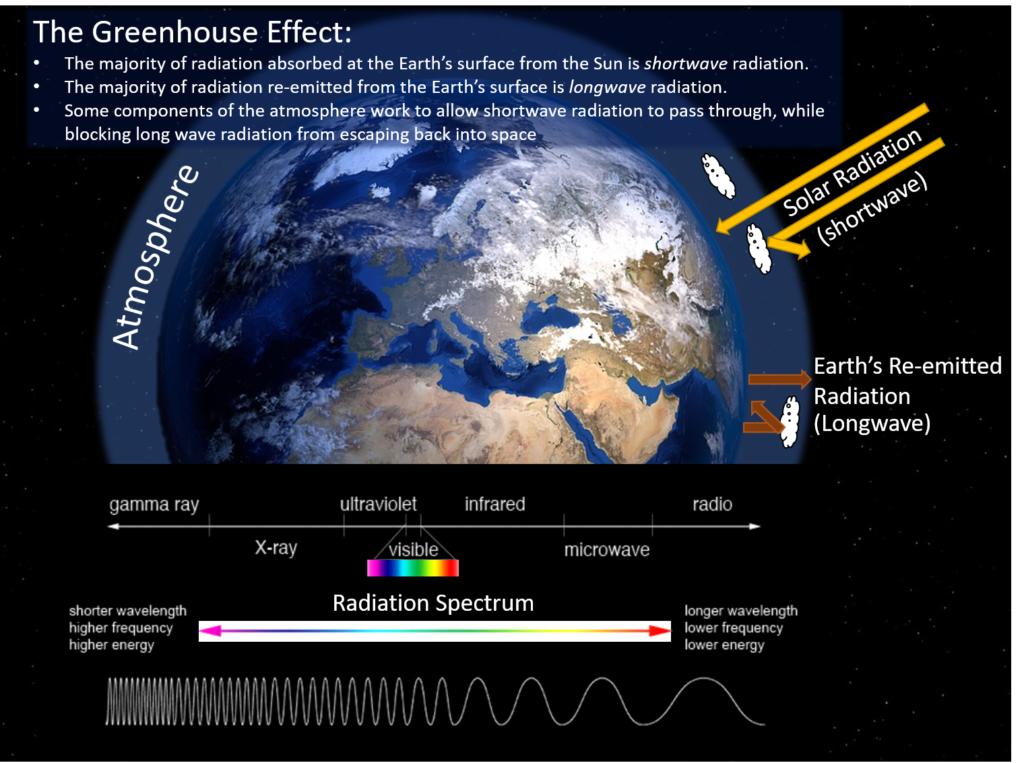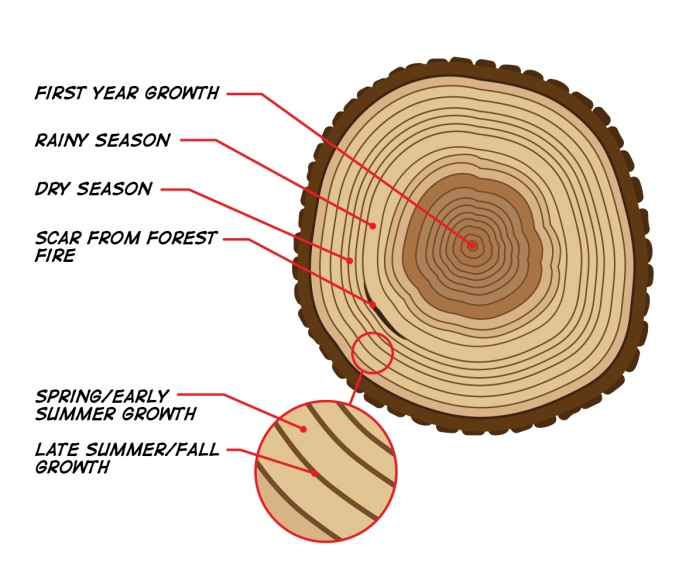Main Body
Chapter 10
Topic 10 — Rogue Atmosphere: Climate Change
According to Wien’s Law, objects radiate energy in relation to their temperature. This means that the electromagnetic radiation emitted by the Sun is much shorter wavelength than the same energy once it has been absorbed by the Earth and re-emitted. This difference in wavelength is critical in producing the conditions necessary for heating the Earth using atmospheric absorption. The gases in our atmosphere allow significant amounts of shortwave energy through, while blocking the emission of long-wave energy, trapping heat energy in the Troposphere. Some of these effective heat-trapping gases , like Carbon Dioxide (CO2), Methane (CH4), and water vapour (H2O) have been changing in balance over at least the last century. A primary source for these emissions is from human industrial process.

Recent trends in climate are fairly straightforward for scientists to track. Reliable temperature records from weather stations around the world are available for the last century, and since the launch of weather satellites, space-based, global temperature measurements have been possible. As a result, a strong record of global temperature and precipitation trends, as well as changes to atmospheric composition exists for the last century. The IPCC (Intergovernmental Panel on Climate Change) reports the following (AR5):
Temperature:
– Each of the last three decades has been successively warmer at the Earth’s surface than any preceding decade since 1850
– The period from 1983 to 2012 was likely the warmest 30-year period of the last 1400 years in the Northern Hemisphere, where such assessment is possible (medium confidence)
– The globally averaged combined land and ocean surface temperature data as calculated by a linear trend show a warming of 0.85 [0.65 to 1.06] °C over the period 1880 to 2012
Precipitation:
– Averaged over the mid-latitude land areas of the Northern Hemisphere, precipitation has increased since 1901 (medium confidence before and high confidence after 1951)
These measured changes in climate conditions are supported by predicted changes in Earth’s environmental systems. For example:
– Over the period 1901 to 2010, global mean sea level rose by 0.19 [0.17 to 0.21] m
– Arctic sea-ice extent has decreased in every season and in every successive decade since 1979, with the most rapid decrease in decadal mean extent in summer (high confidence)
– Since the beginning of the industrial era, oceanic uptake of CO2 has resulted in acidification of the ocean; the pH of ocean surface water has decreased by 0.1 (high confidence), corresponding to a 26% increase in acidity
The linkages between shifting climate normals and human activity are clear. Human contributions to atmospheric gases like CO2, CH4, and others have increased since pre-industrial times and are at their highest emissions rate in history. About 40% of our emissions of these gases since 1750 have remained in the atmosphere. Current atmospheric concentrations of these gases appear to be at their highest concentrations in the last 800 000 years.


Measuring climate and atmospheric conditions into the deep past for comparison with current conditions requires methods beyond direct measurement of temperature and precipitation. The measurements used for this purpose are called “proxy records”. These data sources do not directly measure temperature or precipitation, but indirectly reflect atmospheric conditions. For example, tree rings grow at a rate proportional to environmental conditions. Where precipitation is a dominant control on growth, tree ring size can be used to approximate precipitation for a region. Tree-rings provide a proxy record going back several thousand years in some areas of the globe. Extending the record even further requires other proxy records like ice cores and deep-sea sediment cores that have similar relationships to temperature and precipitation conditions.
